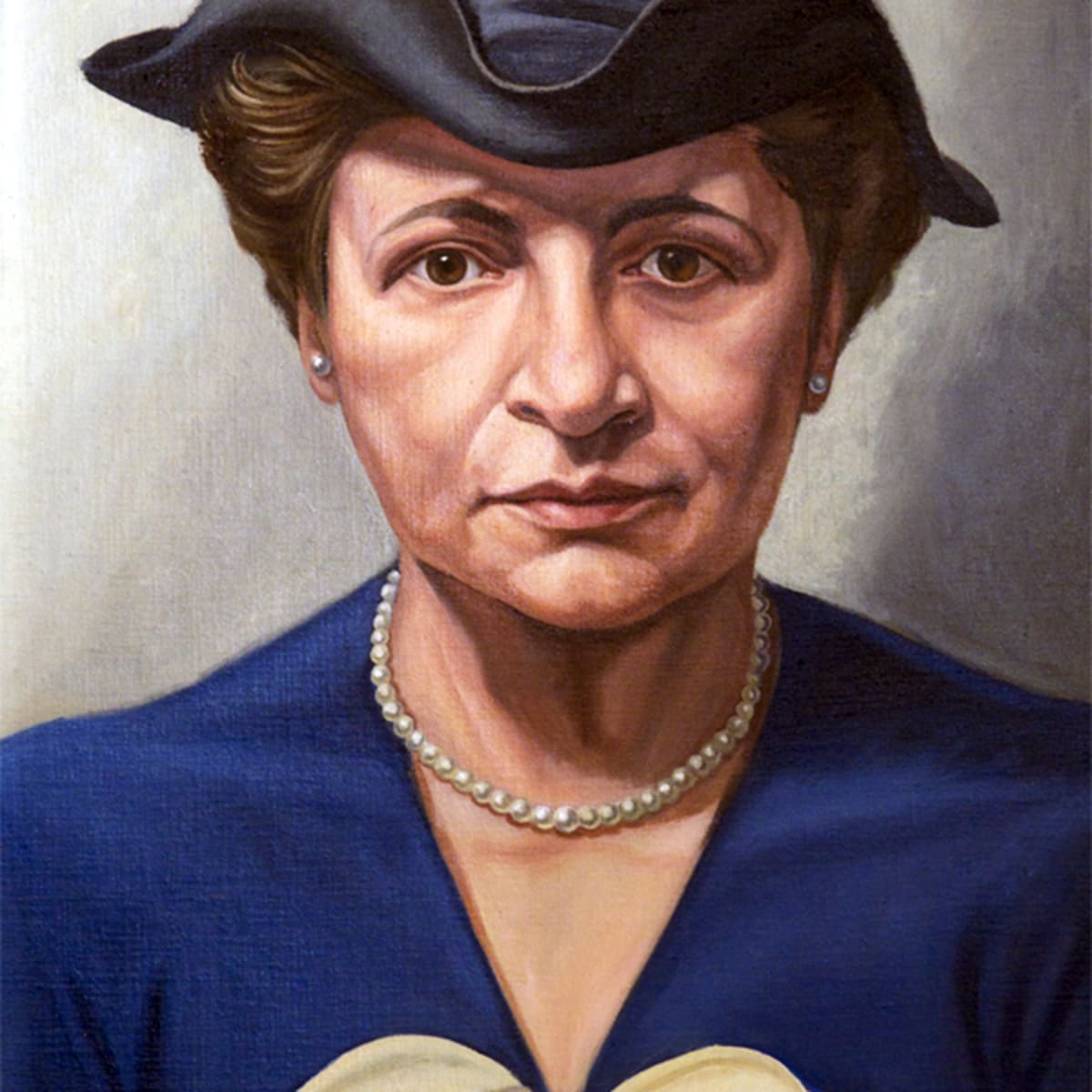Meet FDR’s Backbone: Frances Perkins–An Extraordinary Woman Leader

Franklin Delano Roosevelt rates as being one of America’s greatest presidents, probably in the top three. Yet he was despised by many during his ascendancy to president and during his four term tenure. And he is still reviled by right-wing conservatives and some Republicans.
FDR, of whom your corespondent is a great admirer, was an exceedingly complicated man. He most certainly had his warts, weaknesses and biases. However, he was also a visionary who understood what America needed to do during the Great Depression and as World War Two proceeded initially in the absence of the involvement of the United States.
Furthermore, FDR was probably the most effective president at initiating and sustaining action. He launched early in his presidency the Civilian Conservation Core, instituted the New Deal, and deftly handled a demanding Winston Churchill during the War. He also launched a massive infrastructure program during the Great Depression, the results of which are still critical to the country’s economy.
This all sounds great. And it is. But there’s one important omission: FDR didn’t accomplish his achievements alone. One person who served under him, and who was in effect his backbone in many ways, was a woman. Her name was Frances Perkins (April 10, 1880 – May 14, 1965).
As early as 1930 when Roosevelt was the Governor of New York, Perkins (above picture) relentlessly prodded him to support social insurance. When he took office as president in 1933, Roosevelt stalled in proceeding with social insurance because he believed that the country was not yet ready for such change. During his first Hundred Days (a concept borrowed from Napoleon), FDR argued that Perkins, as Labor Secretary, should commence an education campaign on the subject to begin laying the foundation within government and the American public. In addition, he wanted a panel of experts to study what would be involved in introducing social insurance.
Perkins accepted this approach and began a focused effort during which she raised the subject over two dozen times in Cabinet meetings during 1933, and delivered 100 speeches across America in which she touted the benefits of social insurance.

As the months proceeded through 1934 and as FDR continued to show ambivalent behaviour towards introducing social insurance, Perkins took drastic action in December of that year. At a Cabinet meeting at her home, during which the discussion became heated over whether social insurance should be run by the federal or state governments, she locked the doors to her house and disconnected the phone, stating that no one was going to leave until an agreement was reached. At 2 am a tentative agreement was finalized.
Of course, there were still many rough patches in the months afterwards. For example, it’s amazing that one of the issues that concerned Cabinet in 1935 was that an aging population would eventually contribute to a deficit in social insurance by 1980. Yes, that’s 1980, 45 years later! How often do we see politicians looking that far ahead nowadays?
Perkins was a pit bull when it came to grabbing onto an issue she believed was critical for America and then driving it forward. Hers is a fascinating story of how one woman was the impetus for a program that has served tens of millions of Americans, serving as an automatic economic stabilizer, as well as mitigating the effects of poverty among the elderly. Incidentally, it wasn’t until January 1940 that the first individual received a Social Security check, in the amount of $22.54, a Miss Ida Fuller of rural Vermont.
Frances Perkins may not be well known as an incredible leader, but she is in the ranks of other contemporaries, such as Eleanor Roosevelt and Mary Parker-Follett, seen as the Mother of Modern Management. We have a lot for which to thank Frances Perkins.
Leadership is not defined by the exercise of power but by the capacity to increase the sense of power among those led. The most essential work of the leader is to create more leaders. — Mary Parker Follett
Articles from Jim Taggart
View blog
Accountability has become one of those words used in organizations that make people wince. Many year ...

In my last post I talked about building team performance. Today, we look at what kind of team player ...

Many years ago, I watched Eco-Challenge 2000 on the Discovery Channel (a show that ran from 1995 to ...
Related professionals
You may be interested in these jobs
-
general construction supervisor
Found in: Talent CA 2 C2 - 2 days ago
Noor Painting Surrey, CanadaEducation: Secondary (high) school graduation certificate · Experience: 2 years to less than 3 years · Tasks · Co-ordinate and schedule activities · Co-ordinate work activities with other project supervisors or managers · Ensure health and safety regulations are followed · Establ ...
-
transportation logistics manager
Found in: Talent CA 2 C2 - 1 week ago
Tajveer Transport Ltd Langley, CanadaEducation: · Expérience: · Education · Bachelor's degree · Work setting · Trucking company · Tasks · Manage finances or budget · Recruit, train and supervise staff · Arrange for shipping documentation and the tracking and tracing of goods in transit · Establish and implement po ...
-
kitchen supervisor
Found in: Talent CA 2 C2 - 4 days ago
Hibachi Toronto, CanadaEducation: Secondary (high) school graduation certificate · Experience: 7 months to less than 1 year · Work site environment · Odours · Wet/damp · Work setting · Restaurant · Tasks · Establish methods to meet work schedules · Supervise and co-ordinate activities of staff who prep ...




Comments